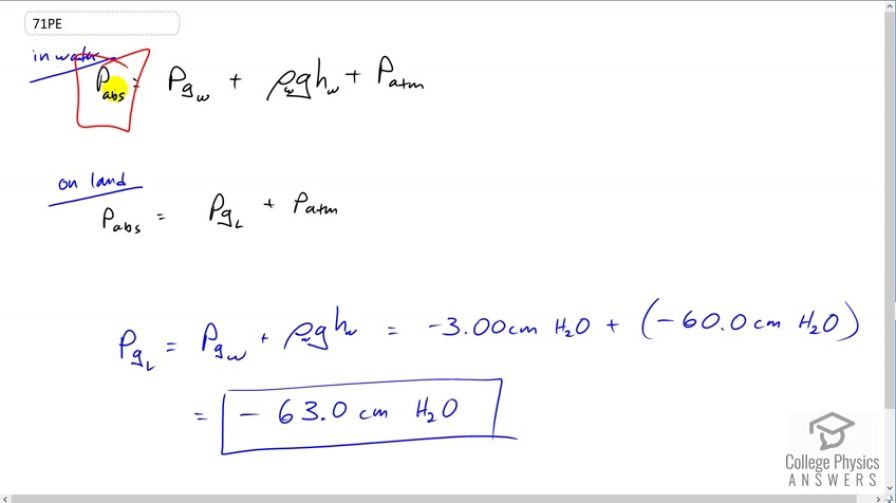Question
Heroes in movies hide beneath water and breathe through a hollow reed (villains never catch on to this trick). In practice, you cannot inhale in this manner if your lungs are more than 60.0 cm below the surface. What is the maximum negative gauge pressure you can create in your lungs on dry land, assuming you can achieve -3.00 cm water pressure with your lungs 60.0 cm below the surface?
Final Answer
Solution video
OpenStax College Physics, Chapter 11, Problem 71 (Problems & Exercises)

vote with a rating of
votes with an average rating of
.
Video Transcript
This is College Physics Answers with Shaun Dychko. So with the data given to us about the lungs underneath the water, we can say that the absolute pressure under water equals this, maybe you could call it gauge pressure, although I'm not sure if that's the correct use of the term because gauge pressure is meant to say pressure not including atmospheric pressure. But in this case we're underneath a column of water as well and so this negative three centimeters of water of pressure is a pressure that in addition to whatever is caused by the water column as well as caused by the atmosphere. So these two terms here represent the performance of the lungs. The lungs are able to overcome this pressure due to the water and then in addition, achieve an additional negative three centimeters of water. Okay. So then on land absolute pressure will be the gauge pressure that we have to find, plus the atmospheric pressure. So we can see that these two terms here correspond to this gauge pressure and this for sure is the proper use of the term gauge pressure because it's pressure plus atmosphere, the atmospheric pressure to get absolute pressure. So we're going to equate these parts here and we'll say the gauge pressure that's possible is the negative three centimeters of water, negative pressure that the lungs can achieve when they are 60 centimeters under the water. This is a total of negative 63 centimeters of water worth of pressure.